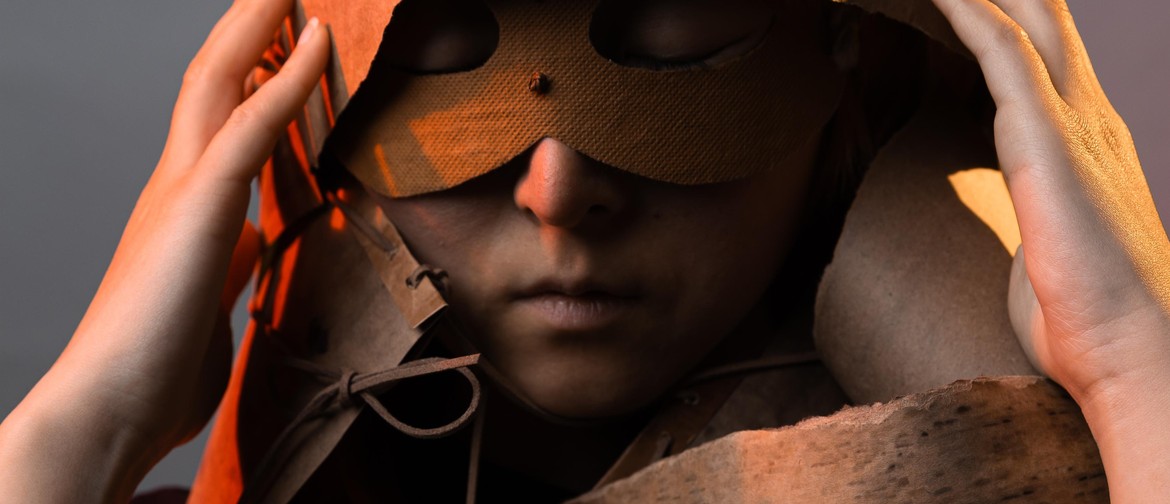Jenny Nimon
It’s 7:30pm, a little under an hour before sunset on a full moon, when we meet outside Wellington Museum. One of the performers is running a little late, so we delay starting while they arrive and the collective has a quick internal debrief – somewhat awkwardly in front of us. Once they are settled, Paula Mac Ewan leads us in a karakia before HT tells us a bit about what we should expect; it’s a thoughtful and thorough debrief, with care taken to assure audience members that our faces will be blurred in the film recording. This said, it’s a gusty Wellington day and HT is quite soft-spoken, so there’s a lot in the preamble that we miss – a shame, too, because I suspect some of the Ewengki tribe traditions she touches on are valuable context that we’ll need to understand the relationship with the taniwha myth we know; a piece of birch bark is significant, but I don’t manage to catch why. I do want to applaud the Temporary Show collective for prioritising accessibility in a walking show by having a dedicated health and safety person available. This kind of thing is so important, and more mobile performances should follow suit.
The walk itself takes us from Wellington Museum along the waterfront via Frank Kitts Park, ending beside a tī kōuka tree near Waitangi Park, where we are invited to join a ritualised act of ‘co-creation’. I’m not entirely sure what I expect from the performance (some spoken word, maybe?), but the work largely leans on soundscape and movement as tools to commune with the landscape. HT plays her harmonica and then holds it up so the wind can play it back in a kind of call and response. This is one of the more moving moments in the journey; it really feels like some nature spirits have come out to play. As performance art, it all feels very Fringe. I will say though that despite the initial care taken for health and safety, the performers have a tendency to charge ahead and leave half the audience about 100 metres behind them, where they inevitably miss parts of the performance. There are moments where it feels a bit like we are prying on a private film production.
For anyone who has read my previous reviews, it will likely not come as a surprise that my gripe about the way practitioners throw around terms like ‘participatory theatre’ is still ongoing. It takes a lot of skill, care and training to effectively involve an audience in a performance, and I am yet to be convinced that leading audience members through some bushes and handing them tambourines earns a show that label. Still, while it might not be the most audience-minded experience, Dialogue Before Sunset feels spiritual and explorative, and it is easy to buy into the creators’ vision even if the execution falls a little short.
Dialogue Before Sunset showed for one night only as part of NZ Fringe 2024. For more information, visit the Fringe website.






